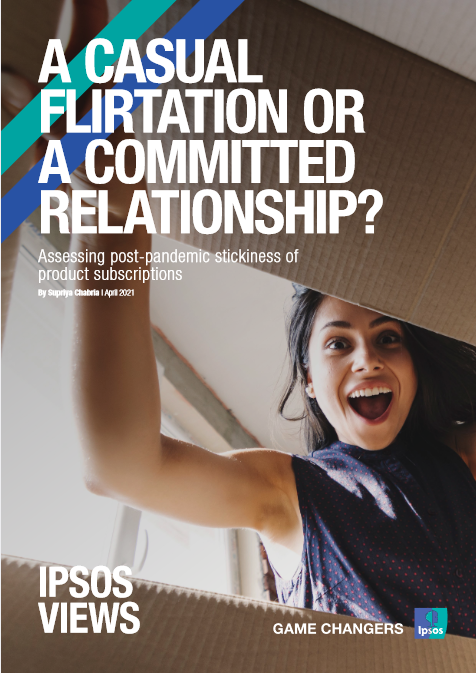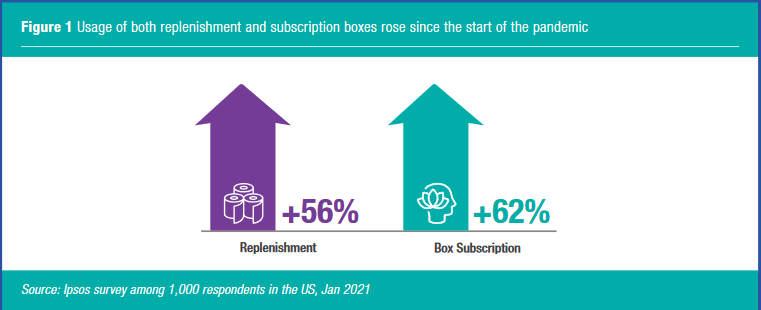Flirtation or commitment: Assessing post-pandemic stickiness of product subscriptions
 Product subscriptions have gained a new relevance during the pandemic, a time when in-store shopping has faced concerns around health and safety. However, when we move beyond the pandemic will this behaviour stick?
Product subscriptions have gained a new relevance during the pandemic, a time when in-store shopping has faced concerns around health and safety. However, when we move beyond the pandemic will this behaviour stick?
There are two types of product subscriptions: replenishment, which is the restocking of essentials such as household supplies and personal care products aimed at offering convenience. For example, Amazon Subscribe & Save. The second form is box subscriptions, which allow users to try new products with a new variety curated and shipped at a regular interval. For example, HelloFresh.
Product subscriptions have seen an increase in usage since the beginning of the pandemic, with Replenishment services rising by 56%, while box subscriptions rose 62%.

Our research found the primary driver for consumers to sign up to product subscriptions was the convenience of home delivery at 44%, up from 14% prior to the pandemic. Similarly, 32% signed-up because it is a safer way to shop, 28% for the free shipping and 22% so they’d know exactly when the product would arrive.
To learn more of what our research uncovered and understand what this means for subscription models, read A casual flirtation or a committed relationship: Assessing post pandemic stickiness of product subscriptions.



